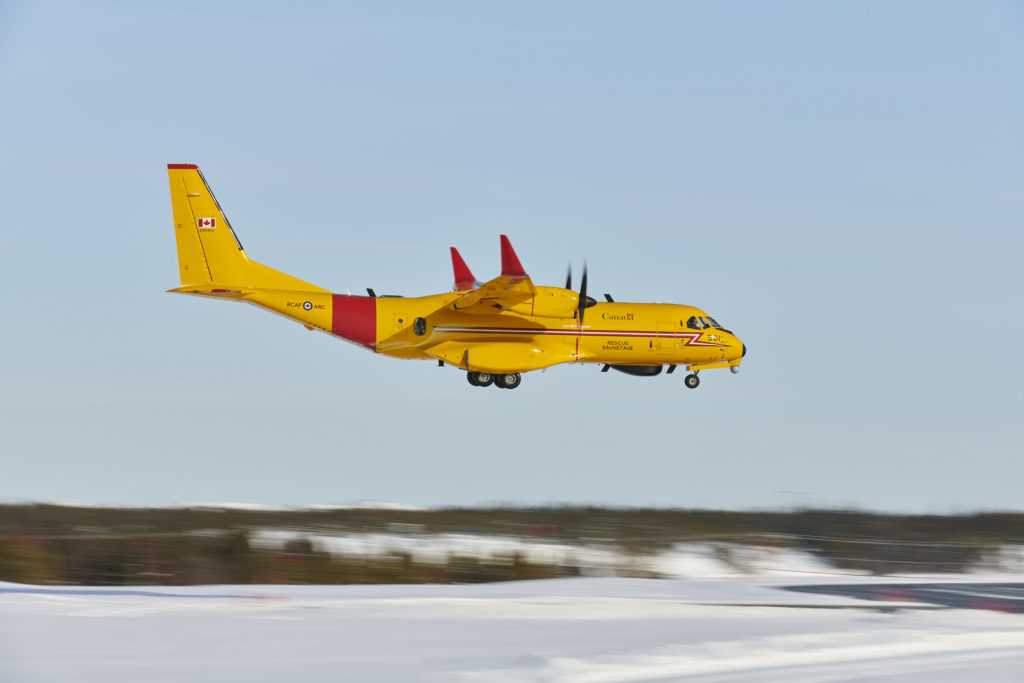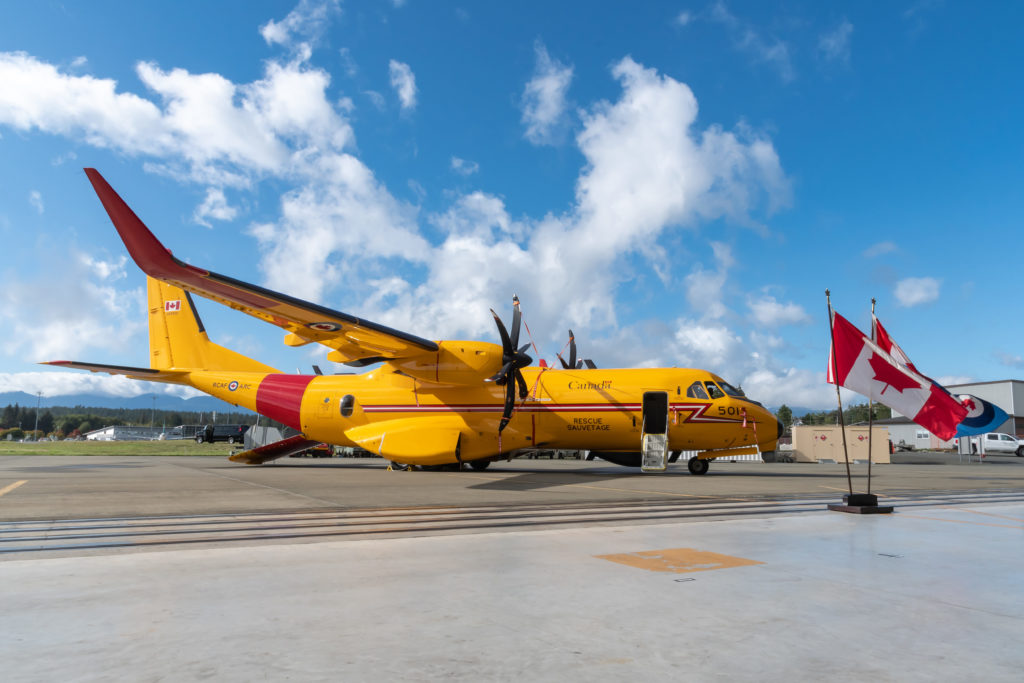Estimated reading time 7 minutes, 30 seconds.
The Department of National Defence (DND) confirmed in a statement on May 4 that the initial operational capability (IOC) of the CC-295 Kingfisher — Canada’s new fixed-wing search and rescue (FWSAR) aircraft — has been delayed from the summer of 2022 to the 2025-2026 timeframe. This means that full operational capability (FOC) has also shifted from summer 2024 to fiscal year 2029-30.
There are a number of factors that have contributed to the delay, including “unforeseen technical issues, the impacts of Covid-19,” and “extended timelines associated with the design and development of the capability.”

This delay will mean a 10-year timeline from the date of the contract award in December 2016 to anticipated IOC in 2025-26, but the DND said “these types of issues are not unusual given the complexity of the capability being developed.”
While existing C295 aircraft have been certified by civilian and military agencies, Airbus made over 30 design changes to the base model of the aircraft – which means additional certifications — and opted to develop and integrate new capabilities into the aircraft in order to meet Canadian requirements for SAR. As the DND noted, unforeseen technical challenges have surfaced, which will take Airbus and its sub-contractors time to resolve.
One example is the deficiencies that were identified in the Crew Annunciation System (CAS) within the cockpit avionics. The CAS provides the aircrew with information on the aircraft’s status and its systems. In order to correct the deficiencies, software and/or hardware development and updates are necessary, which, of course, require testing and certification.
These delays then impact the development of aircraft operating instructions and related training materials, as these must be reflective of the final aircraft configuration.
The eventual CC-295 fleet will be equipped with enhanced sensor capabilities that are expected to greatly reduce on-scene search times. Crews will be able to locate individuals or objects (like downed aircraft) from more than 40 kilometers (25 miles) away, even in low-light conditions, according to the DND.
The aircraft will also use modern communications systems that enable SAR personnel to share real-time information with partners on the ground.

The 16 CC-295 aircraft are meant to replace Canada’s now-retired fleet of CC-115 Buffalo FWSAR aircraft (which were in service for 55 years), as well as several of the 12 CC-130 H-model Hercules that perform a SAR role with squadrons at 8 Wing Trenton, Ontario; 14 Wing Greenwood, Nova Scotia; and 17 Wing Winnipeg, Manitoba.
Given that the final operational flight of the CC-115 Buffalo took place in mid-January this year, interim SAR coverage is necessary.
“The CAF [Canadian Armed Forces] have implemented a plan to ensure continuous fixed-wing SAR availability and coverage during the transition to the CC-295, including during this delay,” the DND said.
The CAF will rely on existing CC-130 Hercules aircraft until the CC-295 is ready to assume its SAR role.
“The current plan is to continue the employment of the CC130H in the Trenton and Halifax Search and Rescue Regions,” the DND said. “Interim SAR coverage in Search and Rescue Region Victoria is currently being provided by 435 Squadron operating CC-130H Hercules aircraft out of Winnipeg. Beginning at the end of May 2022, two CC-130H Hercules will deploy to Comox, B.C., to be operated directly from there.
“Search and Rescue Region Victoria will have ongoing support from CH-149 Cormorant helicopters. . . . For fixed-wing support for missions at sea, Joint Rescue Coordination Centre Victoria may also call upon . . . 407 Squadron CP-140 Auroras and U.S. Coast Guard fixed-wing aircraft.”
Although operationalization of the CC-295 will take more time, the DND said it currently expects “to remain within the project’s approved budget.”
Airbus Defence and Space won the contract award for Canada’s FWSAR project, valued at $2.9 billion, back in December 2016. The OEM is to provide a fleet of 16 new CC-295 sensor-equipped aircraft; a new simulator-equipped training center in Comox, British Columbia; ongoing maintenance and support services for the aircraft; and options to extend the maintenance and support services for an additional 15 years. The contract will provide Canada with a complete and technologically advanced SAR solution up to 2042.

The DND confirmed that aircraft production is progressing on schedule, with an average production rate of five aircraft per year. The aircraft are being built in Spain, before being flown to Canada for further work and operational testing. The 16th and final CC-295 aircraft is expected to arrive in Canada by the end of 2022.
The CC-295 Kingfisher will eventually operate from the same locations currently providing SAR services across Canada: 19 Wing Comox, 8 Wing Trenton, 14 Wing Greenwood, and 17 Wing Winnipeg.









What?! The Canadian government couldn’t deliver capability on time and on cost? Colour me shocked!
This is total nonsense! How can the final costs be within budget when all of the work-around expenses are included? Why is DND withholding detail on the technical issues?
The budget for capital projects includes contingency funding to cover the cost of solving, among others, potential design and development issues. Project complexity and the assessed technological risk are evaluated at the costing stage to determine the amount of contingency funding to include in the total project budget. The cost of a delay in the IOC and FOC of the Kingfisher would have certainly been considered during the risk assessment for the project.
Just wait till you see the delays and cost overruns for the F-35!!!
Arrogant TB assessments supported by Program Management based on suspect faulty acceptance of the Airbus bid. But……….why would we be surprised? This is classic Canadian mismanagement of a fairly straight forward requirement. Spin it any way you want, but give this procurement a big fat “F”. We could not procure c,cardboard without issues. Go figure.